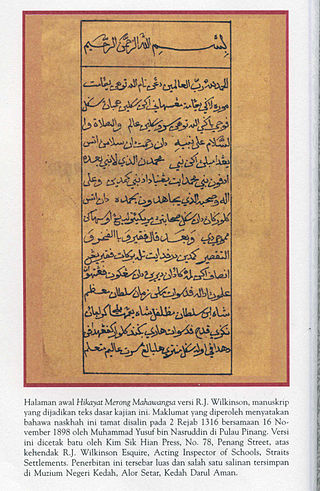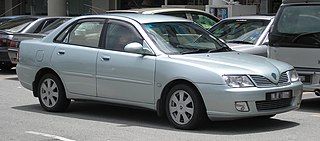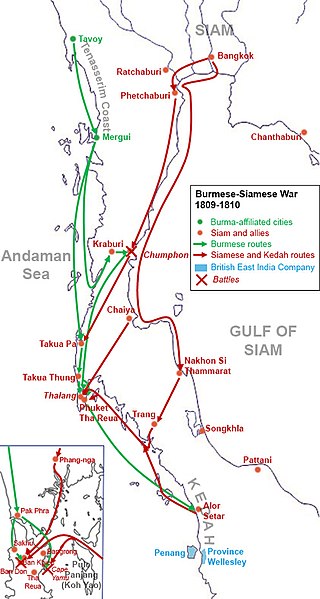
Satun (Thai: สตูล, pronounced[sā.tūːn] is one of the southern provinces of Thailand. Neighboring provinces are Trang, Phatthalung, and Songkhla. To the south it borders Perlis of Malaysia.

Perlis, also known by its honorific title Perlis Indera Kayangan, is a state of Malaysia in the northwestern coast of Peninsular Malaysia. It is the smallest state in Malaysia by means of area and population, as well as the northernmost in the country. The state borders the Thai provinces of Satun and Songkhla to the north and the Malaysian state of Kedah to the south. Perlis is the only Malaysian state that is not divided into any districts, due to its small size, but it is still divided into several communes. It was called Palit by the Siamese when it was under their influence. Perlis had a population of 227,025 as of the 2010 census.

Kedah, also known by its honorific Darul Aman and historically as Queda, is a state of Malaysia, located in the northwestern part of Peninsular Malaysia. The state covers a total area of over 9,000 km2, and it consists of the mainland and the Langkawi islands. The mainland has a relatively flat terrain, which is used to grow rice, while Langkawi is an archipelago, most of which are uninhabited islands.

Captain Francis Light was a British explorer and the founder of the British colony of Penang and its capital city of George Town in 1786. Light and his lifelong partner, Martina Rozells, were the parents of William Light, who founded the city of Adelaide in South Australia.

Langkawi, officially known by its sobriquet Langkawi, the Jewel of Kedah, is a duty-free island and an archipelago of 99 islands located some 30 km off the coast of northwestern Malaysia and a few kilometres south of Ko Tarutao, adjacent to the Thai border. Politically, it is an administrative district of Kedah, with Kuah as its largest town. Pantai Cenang is the island's most popular beach and tourist area.

The Malaysia–Thailand border divides the sovereign states of Malaysia and Thailand and consists of a land boundary running for 595 km across the Malay Peninsula and maritime boundaries in the Straits of Malacca and the Gulf of Thailand/South China Sea. The Golok River forms the easternmost 95 km stretch of the land border.

Hikayat Merong Mahawangsa, alternatively spelt Hikayat Marong Mahawangsa and also known as the Kedah Annals, is a Malay literary work that gives a romantic account of the history and tales relating to the Malay kingdom, kingdom of Kedah. The work is thought to have been written in the late 18th century or some time in the 19th century. Although it contains historical facts, there are also many incredible assertions in its accounts. The era covered by the text ranged from the opening of Kedah by Merong Mahawangsa, described as a descendant of Dhu al-Qarnayn until the acceptance of Islam.
Merong Mahawangsa is a legendary warrior and a ruler who is said to be the first king of Langkasuka, or the modern-day Pattani empire. His tale is mentioned in the Kedah Annals, where it mentions him as a hero who became the first king of Langkasuka.

This article lists important figures and events in Malaysian public affairs during the year 2000, together with births and deaths of notable Malaysians.

Kuah, Kuah Town or Bandar Kuah is a resort town, mukim and district capital of Langkawi, Kedah, Malaysia. It is the entry point for those coming by ferry from either the mainland or Penang Island. The town is centered on its jetty, which is a point of arrival for tourists from the mainland. With a population of more than 30,000, Kuah has become a major town due to the growth of visitors after Langkawi developed into a tourist centre since 1986.
Mahsuri National Secondary School is a national secondary school located at the heart of Kuah, Langkawi, Kedah, Malaysia. The majority of the students in this school are enrolled in 10 semesters of preparatory courses before taking the national exam known as the Malaysian Certificate of Education. whereas some students who choose to pursue Sixth Form usually undergo one and a half more years of schooling. Science courses including Biology, Chemistry and Physics are usually not offered here.

Thai Malays, with officially recognised terms including 'Malayu-descended Thais' and 'Malay', is a term used to refer to ethnic Malay citizens of Thailand, the sixth largest ethnic group in Thailand. Thailand is home to the third largest ethnic Malay population after Malaysia and Indonesia and most Malays are concentrated in the Southern provinces of Narathiwat, Pattani, Yala, Songkhla, and Satun. Phuket Ranong, and Trang home to a sizeable Muslim population, also have many people who are of Malay descent. A sizeable community also exists in Thailand's capital Bangkok, having descended from migrants or deportees who were relocated from the South from the 13th century onwards.
Kapitan China Koh Lay Huan was a wealthy and educated man, who had earlier rebelled against the Manchu-led Chinese Qing dynasty and fled to Siam and the Malay States, to eventually settle in Penang as its first Kapitan China. He was a merchant, planter, tax farmer, Chinese secret society headman, and one of a handful of pioneering leaders of Penang.

Kedahan Malays or commonly known as Orang Utara ('Northerners'), are a sub-group of Malays native to northern Malay Peninsula in areas of both current and historical area of Kedah. They are among the oldest ethnic groups in the Malay peninsula with a history dating back 2,800 years as proven by the discovery of sites in Bujang Valley and historical documents from India, China and Arabia. Kedahan Malays are one of the largest Malay sub-groups in Malaysia, comprising at least 15% of the total Malaysian Malay population including those with Kedahan ancestry.

Che Puan Besar Hajah Haminah binti Haji Hamidun, formerly known as Sultanah Haminah is the former Sultanah of Kedah and the widow of Sultan Abdul Halim Mua'dzam Shah. Born as a commoner, she married Sultan Abdul Halim on 25 December 1975 as his second wife. She served as the 14th Raja Permaisuri Agong of Malaysia from 2011 to 2016, during her husband's second term as Yang di-Pertuan Agong, the Malaysian federal head of state. After her husband's death in September 2017, his successor and her brother-in-law Sultan Sallehuddin, bestowed upon her the title Che Puan Besar of Kedah, roughly equivalent to the queen dowager.

The Siamese invasion of Kedah was a military operation mounted by the Kingdom of Siam against the Sultanate of Kedah in November 1821, in the area of what is now northern Peninsula Malaysia.

The Burmese–Siamese War (1809–1812) or the Burmese Invasion of Thalang was an armed conflict fought between Burma under Konbaung dynasty and Siam under the Chakri dynasty, during the period of June 1809 and January 1812. The war centered on the control of the Phuket Island, also known as Thalang or Junk Ceylon, and the tin rich Andaman Coast. The war also involved the Kedah Sultanate. This occasion was the last Burmese offensive expedition into Siamese territories in Thai history, with British acquisition of the Tenasserim Coast in 1826, following the First Anglo-Burmese War, removing several hundred miles of the existing land border between Siam and Burma. The war also left Phuket devastated and depopulated for many decades until its reemergence as a Tin mining center in the late 19th century.

The Langkawi Legend Park is a park in Kuah, Langkawi, Kedah, Malaysia.

Setul, officially the Kingdom of Setul Mambang Segara was a Malay kingdom founded in the northern coast of the Malay Peninsula. The state was established in 1808 in the wake of the partition between the rulers of the royal house of Kedah. The partition witnessed the territory being seceded to the cadet branch of the royal family. The sovereignty of the kingdom effectively ended in 1916, following the dissolution by the Siamese government. Its borders were largely inherited to its successive province, the present-day Satun, Thailand.
Chao Phraya Nakhon Si Thammarat, personal name Noi Na Nagara, was the governor of Nakhon Si Thammarat or Ligor from 1811 to 1838 and a son of King Taksin. He had important roles in the relations between Siam and the Sultanate of Kedah during the nineteenth century. His modern descendants bear the surname Na Nagara, Komarakul Na Nagara and Chaturangakula. Chao Phraya Nakhon Noi was known in Malay sources as Phya Buri Sakmuton and in contemporary British sources as the Raja of Ligor.















